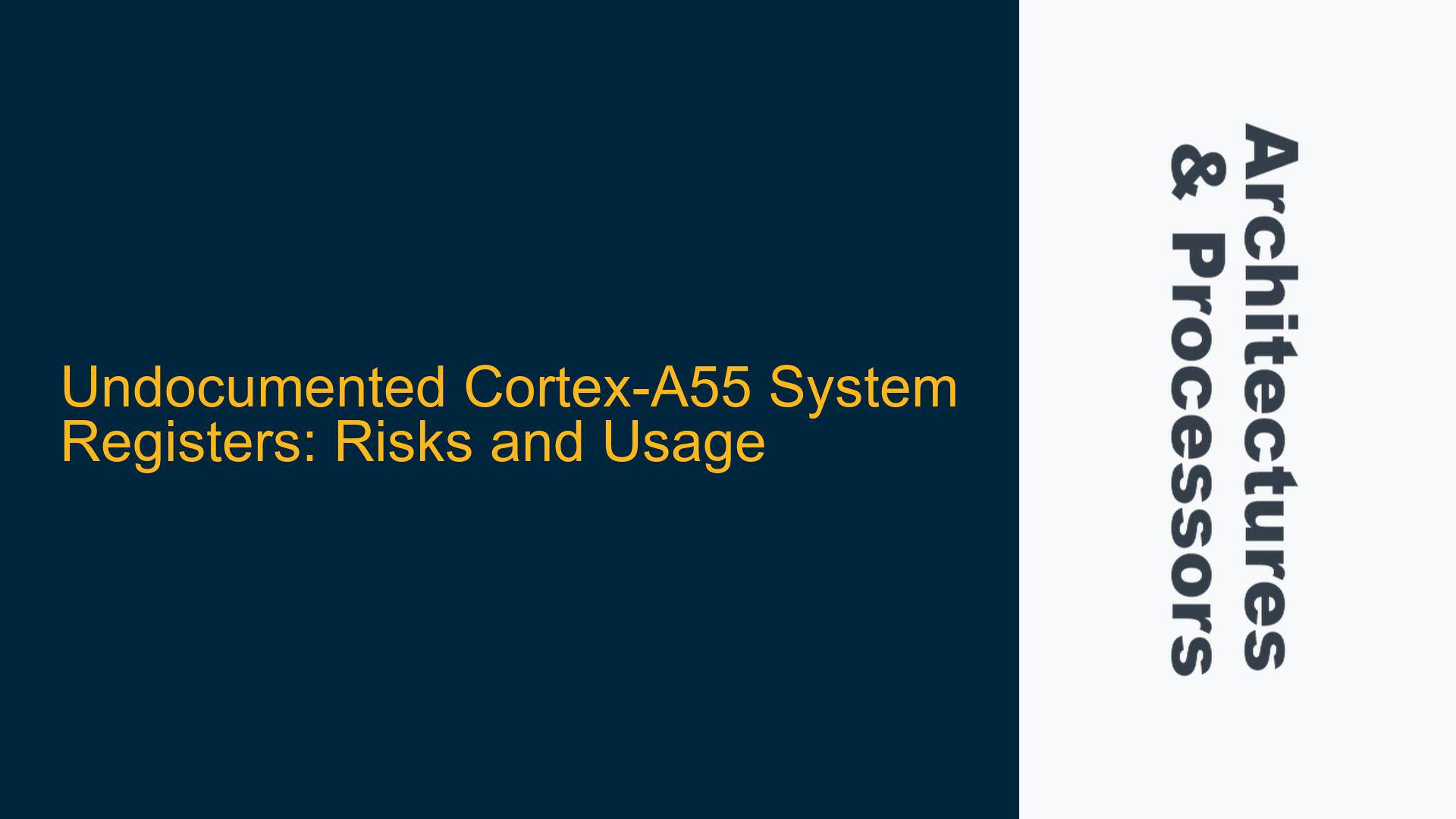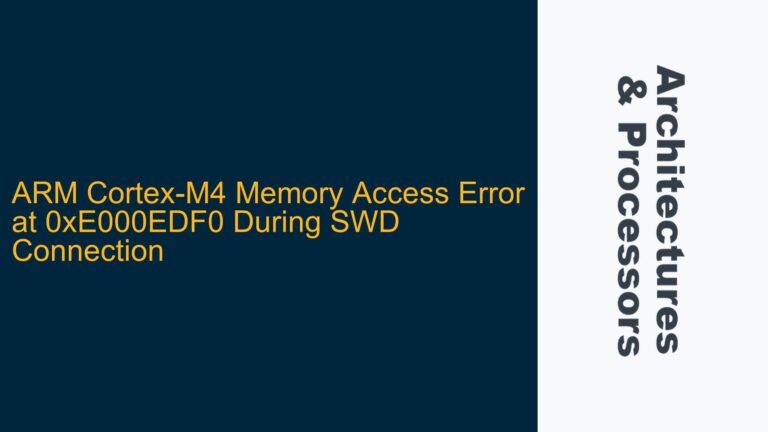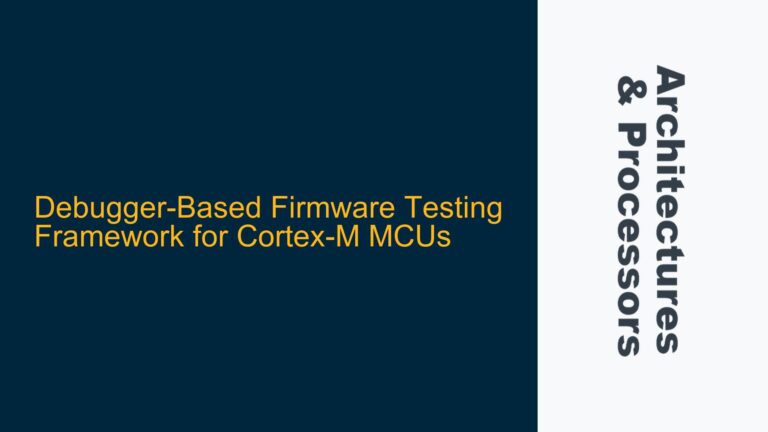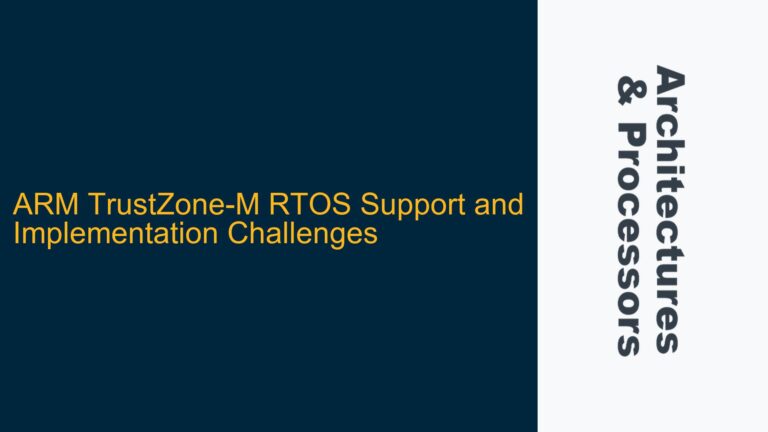Cortex-A55 IMPDEF System Registers and Their Undocumented Behavior
The Cortex-A55, a highly efficient mid-range ARM Cortex-A series processor, implements a variety of system registers that are critical for its operation. Among these, some registers fall under the IMPDEF (Implementation Defined) category, meaning their functionality is specific to the Cortex-A55 implementation and not architecturally defined by ARM. The registers in question—s3_0_c15_c7_0, s3_4_c15_c7_0, s3_4_c15_c7_1, and s3_5_c15_c7_0—are not explicitly documented in the Cortex-A55 Technical Reference Manual (TRM), leading to confusion about their purpose and potential risks associated with their use.
These registers are accessed using the MRS (Move System Register to general-purpose register) and MSR (Move general-purpose register to System Register) instructions. The syntax for these instructions follows the format MRS Xt, (S<op0>_<op1>_<Cn>_<Cm>_<op2>), where op0, op1, Cn, Cm, and op2 define the specific register being accessed. For example, the register s3_0_c15_c7_0 corresponds to op0=3, op1=0, Cn=15, Cm=7, and op2=0.
The lack of documentation for these registers raises several concerns. First, their functionality is opaque, making it difficult to predict the impact of reading or writing to them. Second, improper use of these registers could lead to undefined behavior, including system instability, performance degradation, or even hardware damage. Third, since these registers are IMPDEF, their behavior may vary across different implementations or revisions of the Cortex-A55, further complicating their use.
To understand these registers better, we must delve into the ARM architecture’s handling of IMPDEF registers. IMPDEF registers are typically used for implementation-specific features, such as performance monitoring, debugging, or custom hardware extensions. They are not part of the ARM architecture specification, meaning their behavior is determined by the specific processor implementation. In the case of the Cortex-A55, some of these registers have been identified as part of the Auxiliary Translation Control Register (ATCR) family, which is used for managing translation table walks and other memory management tasks.
For example, the register s3_0_c15_c7_0 has been identified as ATCR_EL1 (Auxiliary Translation Control Register for Exception Level 1). This register is used to control auxiliary features related to address translation, such as prefetching and caching behavior during translation table walks. However, the exact functionality of this register and others in the same family is not fully documented, leaving developers to rely on trial and error or internal ARM documentation.
Risks of Writing to Undocumented IMPDEF Registers
Writing to undocumented IMPDEF registers carries significant risks, primarily due to the lack of clarity about their purpose and behavior. These risks can be categorized into three main areas: system instability, performance degradation, and hardware damage.
System instability is the most immediate risk. Since the functionality of these registers is not documented, writing arbitrary values to them can lead to unpredictable behavior. For example, modifying a register that controls memory management could result in incorrect address translations, leading to data corruption, application crashes, or even kernel panics. Similarly, altering a register that influences interrupt handling could cause spurious interrupts or prevent legitimate interrupts from being serviced, rendering the system unresponsive.
Performance degradation is another potential risk. Many IMPDEF registers are used to control performance-related features, such as cache behavior, branch prediction, and power management. Writing incorrect values to these registers can disable optimizations or introduce inefficiencies, leading to reduced performance. For instance, modifying a register that controls cache prefetching could result in excessive cache misses, increasing memory latency and reducing overall system throughput.
Hardware damage, while less likely, is still a possibility. Some IMPDEF registers may control low-level hardware features, such as voltage regulation or thermal management. Writing inappropriate values to these registers could cause the processor to operate outside its specified parameters, potentially leading to overheating or electrical damage. While modern processors include safeguards to prevent catastrophic failure, repeated misuse of these registers could still result in long-term reliability issues.
To mitigate these risks, developers should avoid writing to undocumented IMPDEF registers unless absolutely necessary. When such access is required, it should be done with extreme caution, preferably under the guidance of ARM or the processor manufacturer. Additionally, any modifications should be thoroughly tested in a controlled environment before being deployed in production systems.
Identifying and Safely Using IMPDEF Registers
To safely use IMPDEF registers, developers must first identify their purpose and functionality. This can be challenging due to the lack of documentation, but there are several strategies that can help. First, developers should consult the Cortex-A55 TRM and other ARM documentation for any hints about the registers’ functionality. While the TRM may not explicitly document these registers, it may provide clues based on their naming convention or location within the register map.
Second, developers can analyze the behavior of these registers through experimentation. This involves reading the registers’ values under different conditions and observing how they change. For example, if a register’s value changes during a translation table walk, it is likely related to memory management. Similarly, if a register’s value changes in response to an interrupt, it may be involved in interrupt handling. While this approach can provide insights, it should be used with caution, as it carries the risks outlined earlier.
Third, developers can seek guidance from ARM or the processor manufacturer. ARM provides technical support and documentation to licensed partners, which may include detailed information about IMPDEF registers. Additionally, ARM’s community forums and support channels can be valuable resources for obtaining advice from experts and other developers.
Once the purpose of an IMPDEF register has been identified, developers can use it safely by following best practices. First, they should ensure that any modifications are reversible. This can be achieved by saving the register’s original value before making changes and restoring it afterward. Second, they should limit the scope of their modifications, changing only the bits necessary to achieve the desired effect. Third, they should thoroughly test their changes in a controlled environment, monitoring for any adverse effects on system stability or performance.
For example, if a developer determines that the ATCR_EL1 register controls cache prefetching during translation table walks, they could experiment with different values to optimize performance. However, they should first save the register’s original value, modify only the relevant bits, and test the changes under various workloads to ensure they do not introduce instability or degrade performance.
In conclusion, while undocumented IMPDEF registers in the Cortex-A55 present challenges, they can be used safely with careful analysis and experimentation. By understanding their purpose, mitigating risks, and following best practices, developers can harness their potential to optimize system performance and functionality. However, this should always be done with caution and under the guidance of ARM or the processor manufacturer to avoid unintended consequences.






